AmeriCorps member are among some of the many unsung heroes of Joplin’s May 22 killer tornado.
They were among the first to arrive and will be among the last to return home.
Although not the most well-known federal program, AmeriCorps place over 75,000 Americans in volunteer roles that help citizens and non-profit agencies increase their productivity and effectiveness.
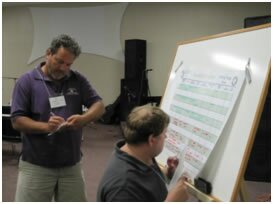 Bruce Bailey, Director of Americorps-St. Louis, was in Kansas City on business at the time the tornado struck on Sunday evening. He arrived in Joplin by 9 p.m. Members of AmeriCorps-St. Louis were told as early as 7:30 that evening they needed to mobilize. The first team was on the ground in Joplin by 2 a.m.
Bruce Bailey, Director of Americorps-St. Louis, was in Kansas City on business at the time the tornado struck on Sunday evening. He arrived in Joplin by 9 p.m. Members of AmeriCorps-St. Louis were told as early as 7:30 that evening they needed to mobilize. The first team was on the ground in Joplin by 2 a.m.
A total of about 125 AmeriCorps volunteers from a variety of locations are in Joplin.
Bailey says, in terms of disaster caused by tornados, Joplin’s was the worst.
“I have worked in 34 states for at least 20 years, as well as overseas,” Bailey says. “The only thing I can compare the Joplin tornado with was the one in Greensburg, Kan. but that was a much smaller community.”
“I have never witnessed the consequences of something so intense or so powerful as what we’ve seen in Joplin,” he says. “That’s the negative.”
“On the positive side, I have never seen such amazing community cohesion, with people pulling together.”
In the first days after the tornado, hundreds of volunteers arrived in Joplin. Some had medical or nursing training. Some were experts with heavy equipment. But many others had no actual experience outside of their own willingness to work. The job of the AmeriCorps Emergency Response Team (ERT) is to effectively manage these volunteers. It is, at the very least, a big job.
Non-medically trained volunteers were given a number of duties including transferring supplies, finding warehousing opportunities, setting up distribution points and sorting clothes and other supplies.
A large number of those have now gone home.
 Abby Simons an AmeriCorps-St. Louis member who serves as liaison with Missouri Southern State University, says the need for volunteers still exists.
Abby Simons an AmeriCorps-St. Louis member who serves as liaison with Missouri Southern State University, says the need for volunteers still exists.
“Right now, we need people,” the dark-haired young woman in her 20s says. “It’s not a day or two after the storm and many of the people who flooded in have gone home,” she states. “But we don’t want to forget about the need that Joplin still has.”
Simons, originally from Manchester, Mo., and a graduate of Truman State University with a degree in psychology, says volunteer coordination is a must.
“People want to give their time but they may not understand the process of volunteer management,” she says. “Many have never been in a disaster situation. It’s very important that volunteers should not mobilize without being self-sufficient in terms of housing, food and knowing what they are going to do.”
She says those wanting to help should contact the Volunteer Center. It is currently staffed by volunteers. The number to call in Joplin is .
“Make sure you are registered,” Simons says. “This is very important.”
In the first days after the Joplin disaster, people wanting to help lined up outside the Billingsly Student Center at MSSU where the Disaster Response Center was located. Every one of them was registered with AmeriCorps.
“Once we have projects in place, we would like to invite these people back,” Simons says.
Simons will complete her second year of service with AmeriCorps this summer. She had worked in disaster situations even before joining the program. She had taken part in church mission trips and, in college, helped New Orleans area residents after Hurricane Katrina.
“I went down to New Orleans and Mississippi three times,” she says.
The 25 St. Louis AmeriCorps members, plus 44 NCCC volunteers from Denver and 12 from the Washington State, have been sleeping in aerobic rooms and the Phelps Theatre at Missouri Southern. Next week, are in the process of moving to another location on campus during the day and Joplin’s Memorial Hall at night.
Simons says she can’t give enough praise to the MSSU faculty and staff, especially the IT Department which has helped establish computer links to the quickly-established Volunteer Center.
“They have gone above and beyond everything we asked,” she says. “They have supported us in everything we have done. We couldn’t have functioned without them.”
Simons says she knows the AmeriCorps team has been a vital step in the reaction to the Joplin tornado
“I think we have filled a huge role that could not have been managed so effectively if we were not here. This is what we are trained for,” she says.
Bailey says the work of AmeriCorps is by no means finished in Joplin.
“We’ll be providing service to people recovering from the tornado for some time,” he says. “This is especially good for the uninsured and under insured.”As we enter recovery, we’ll be helping out not only with temporary repairs but helping people rebuild their whole households.”

 We’re excited to announce a new campaign that focuses on emergency preparedness efforts! Our Good & Ready campaign encourages Americans to create personal and family emergency plans, build emergency preparedness kits, and to get trained to be an emergency response volunteer.
We’re excited to announce a new campaign that focuses on emergency preparedness efforts! Our Good & Ready campaign encourages Americans to create personal and family emergency plans, build emergency preparedness kits, and to get trained to be an emergency response volunteer.
 Today’s post comes from Nele Noppe, a Japanese Studies PhD student living in Kyoto, who helped with tsunami recovery in the
Today’s post comes from Nele Noppe, a Japanese Studies PhD student living in Kyoto, who helped with tsunami recovery in the 



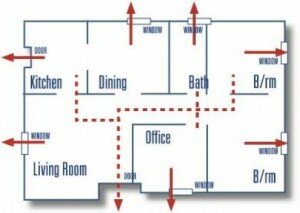 Have an escape route. Take the time to draw a floor plan of your home and mark escape routes for each room. Make sure children understand the drawings and have a copy in their rooms. Don’t forget to establish a meeting places in the event of an emergency like a fire.
Have an escape route. Take the time to draw a floor plan of your home and mark escape routes for each room. Make sure children understand the drawings and have a copy in their rooms. Don’t forget to establish a meeting places in the event of an emergency like a fire.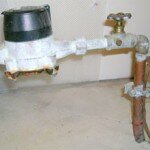 To shut off water, locate the shut off valve where the water comes into your home – it may look like this:
To shut off water, locate the shut off valve where the water comes into your home – it may look like this: Have a plan for family pets. Just like you, animals can be affected by disasters. Make sure you know a shelter you can take your pets to in case of an evacuation. Gather together pet supplies and vet records, and make sure your pet has proper ID. Provide a carrier and leash for your pet. You can contact your local emergency management office, animal shelter, or animal control office for more advice or information.
Have a plan for family pets. Just like you, animals can be affected by disasters. Make sure you know a shelter you can take your pets to in case of an evacuation. Gather together pet supplies and vet records, and make sure your pet has proper ID. Provide a carrier and leash for your pet. You can contact your local emergency management office, animal shelter, or animal control office for more advice or information.
 Abby Simons an AmeriCorps-St. Louis member who serves as liaison with Missouri Southern State University, says the need for volunteers still exists.
Abby Simons an AmeriCorps-St. Louis member who serves as liaison with Missouri Southern State University, says the need for volunteers still exists.

 We’re starting to enter the time of year where severe thunderstorms, tornadoes, and flooding will be more common than it was over the winter. Severe storms can pop up with little notice, and you might not have time to get everything you need together in one place before the storm strikes.
We’re starting to enter the time of year where severe thunderstorms, tornadoes, and flooding will be more common than it was over the winter. Severe storms can pop up with little notice, and you might not have time to get everything you need together in one place before the storm strikes. You can even make a volunteer project out of building your disaster kit by
You can even make a volunteer project out of building your disaster kit by 
 Today’s post comes from Claire Dooms, a Get HandsOn AmeriCorps member at
Today’s post comes from Claire Dooms, a Get HandsOn AmeriCorps member at 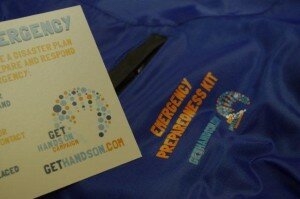 When natural disasters strike, it’s amazing how a community, a country, even the world, can come together in light of a tragedy.
When natural disasters strike, it’s amazing how a community, a country, even the world, can come together in light of a tragedy.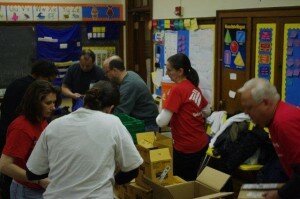 On Tuesday, April 19 a group of volunteers got together to do just that.
On Tuesday, April 19 a group of volunteers got together to do just that.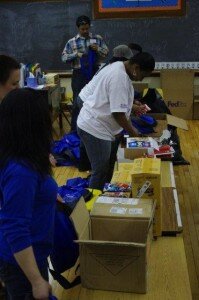 It was very rewarding to see everyone working together and working out a plan to get things done. Once we finished, I was more than happy to answer their questions about exactly what the purpose of the bags was and how they could get more involved in service work in their own communities.
It was very rewarding to see everyone working together and working out a plan to get things done. Once we finished, I was more than happy to answer their questions about exactly what the purpose of the bags was and how they could get more involved in service work in their own communities.


